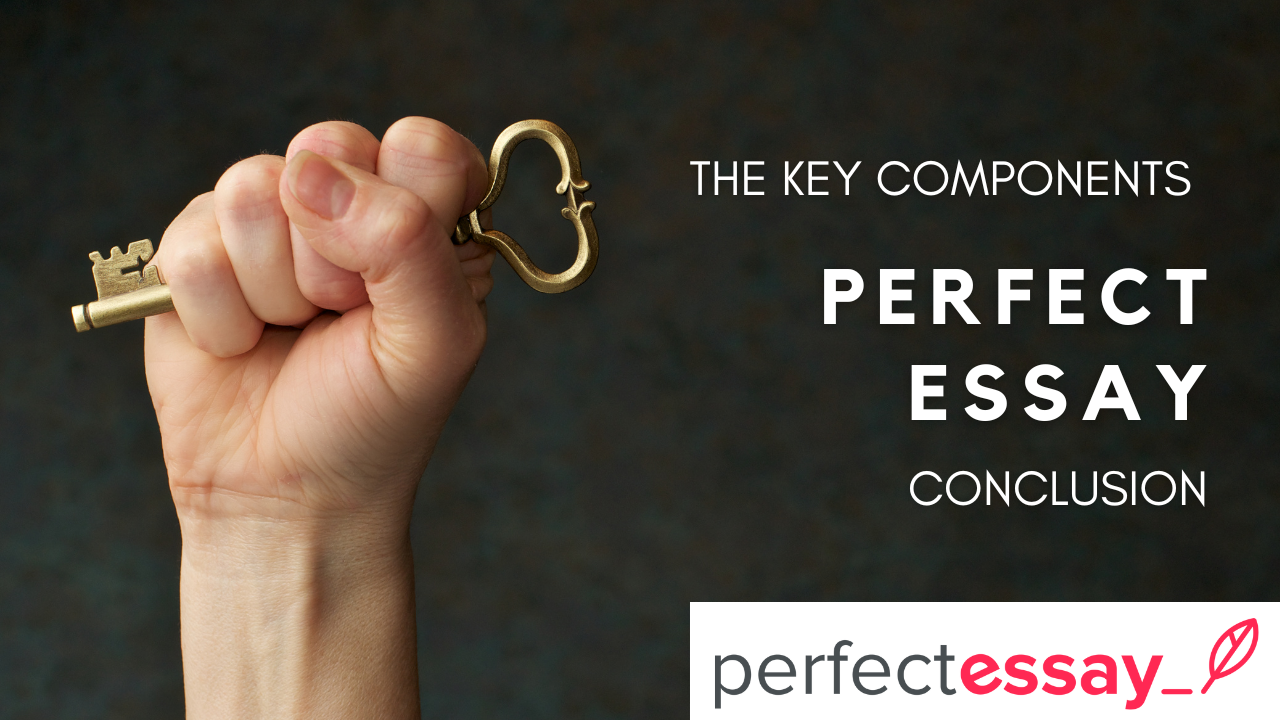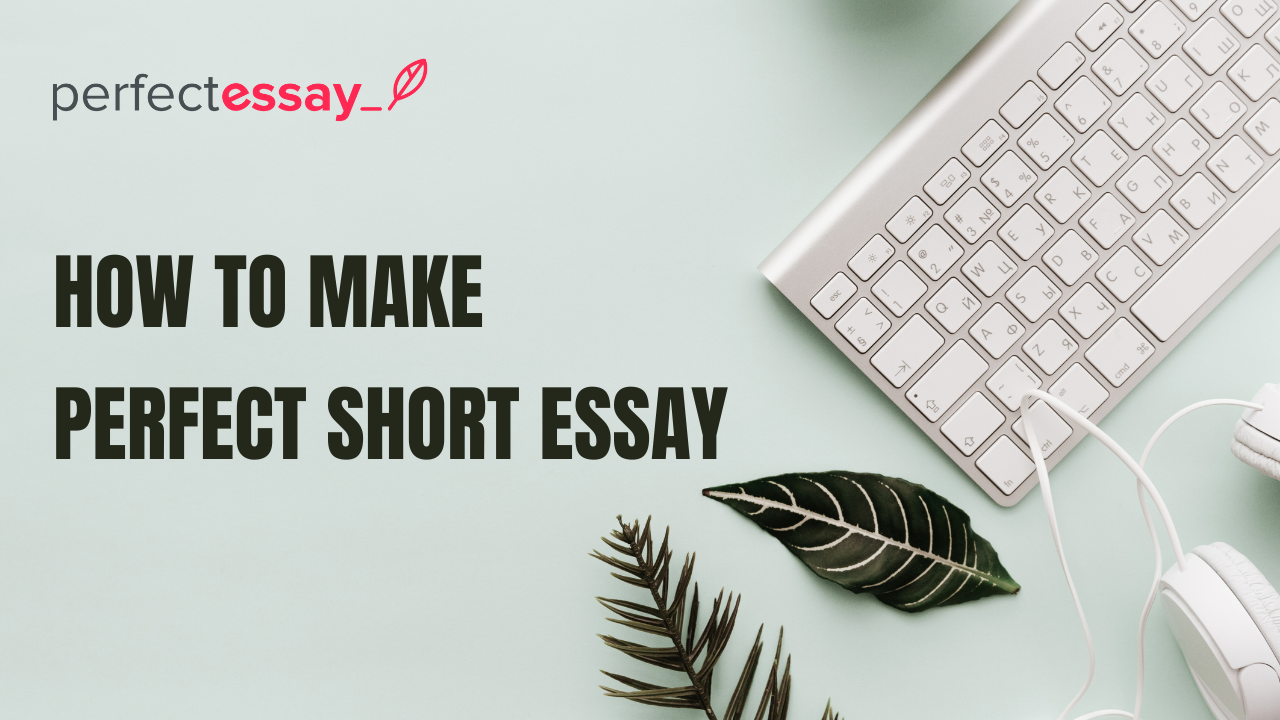Almost every guide on the internet about essay writing would stress the importance of getting the introduction right. Of course, first impressions make a lot of what readers perceive about the subject and writer. Still, many fall short of how to tackle the complexities of the rest of the essay.
An essay is composed of three distinct sections. These are the opening or introduction, the main body, and the conclusion or closing of the essay. Since you can find many online resources on how to write a good introduction to your essay, including our excellent guide, this blog post is about identifying the key components and then using them to write a riveting conclusion of your essay.
PerfectEssay is a leading brand with over a decade in the market, providing submission-ready essays and term papers to students across the globe. Whether you need a last-minute essay or a dissertation, our qualified writers and editors have got you covered. Get a complete essay now!
Significance of A Solid Essay Conclusion Paragraph
The introduction of the essay often has a hook to grab the attention of the readers. In addition to this, it provides the context or background information to the uninitiated so that they are eased into the main body. Many writers ignore the succeeding sections of the essay, especially the conclusion.
However, they should spend at least the same amount of time and effort in writing the conclusion as that of the introduction, if not more. There are many reasons for it:
- Many readers do not read the whole essay and only go through the conclusion to get the feel of the write-up.
- Even those who read the whole essay, are going to read the conclusion of the essay in the end. This will be the section that they will probably remember the most.
Due to these reasons, and many more, writers need to invest time in learning how to write the conclusion of an essay.
How To Write An Essay Conclusion
As an authority in the academic writing business, we often share guides and tips with novice writers and students so that they can get better at doing what they do, especially in the basic art and science of writing an essay. Since this blog is focused on writing the conclusion, let us go through the three major areas to cover in writing a solid concluding paragraph.
Summarizing Main Points
If there is one primary purpose behind writing a conclusion, it is to summarize the main points of the essay. As we have mentioned in the opening paragraphs, many readers do not have the time to read the whole essay. Instead, they skim through the text and read the conclusion to understand what the author tried to say in the essay.
Why Is It Necessary?
The structure of the essay, with its distinct sections, has clear purposes. The opening is about hooking the readers; the main body of the essay is about doing justice to the topic and the title. The conclusion is about tying all the loose ends and getting the discussion to a logical end.
How To Summarize Key Points
The best way to summarize key points while writing the conclusion of an essay is to strip the theme of the essay from all the explanations and flowery prose. Writers can also refer to the outline and roadmap of the essay to ensure that they are not missing any points. Once everything is covered, they can be sure that readers can take away more than just the bare facts but quality writing.
Rephrasing The Thesis Statement
Another way of perfecting the conclusion of an essay is by focusing on the thesis statement. A thesis statement is an essential part of the essay, no matter the type, and it encapsulates the writer’s take in a brief and bold sentence(s). What many novice writers and students do not know is that they can rephrase the thesis statement in the concluding paragraph to tie up the narrative.
Focusing On The Main Item
The focus of the conclusion should be on the main item, and there is no other way around it. For instance, if your thesis statement favors more representation of women in workplaces, your rephrased content should not only align with it but also adds value to it.
Covering The Whole Essay
By rephrasing the thesis, writers eventually cover the whole essay. There are always opening and succeeding lines around the main item, and the writer has to ensure that readers get more information from fewer sentences.
Furnishing Concluding Thoughts
Conclusions are not easy to write, even though many writers wing the whole process and leave all to the odds. Apart from how to write an essay conclusion, they need to understand the importance and learn the craft of writing departing thoughts.
Illuminating Key Takeaways
Catchy one-liners and statements can be the best things to sign off the essay. Since easy reading is hard writing, writers might have to go through multiple drafts to ensure that everything is not only covered but appealing enough for the readers. That way, they will remember the essay, along with its focus and the quality of the writing.
Tips For Adding Value to Departing Thoughts
Whether you are a novice writer or a student in school or college, there are chances that you find tips and hacks more practical than a full-length guide. So, we are sharing some tips on how to end an essay while adding value to the concluding remarks:
Rely on catchy one-liners
Try to encapsulate the gist of the whole essay
Never add a new argument or thought in the concluding paragraph
The last point was often abused by new writers. Whenever you are writing the conclusion, never let new thoughts and arguments get the space there. They all belong to the main body as a conclusion is merely about revisiting them in the closing lines.
Adding Value to The Conclusion Paragraph For the Essay
Since many writers ignore the value of conclusions, they often end with loose narratives and subpar writing. That is factual and without improving the quality of the contents, they cannot succeed in doing better with their introductions and main bodies of the essay.
Apart from reiterating the thesis and focal points from the main body, conclusions are also there to add value to the essay. Instead of twisting and turning the facts, let’s go through some of the professional techniques for acing the conclusion.
Professional Techniques
Professional writers consider the conclusion as a stand-alone piece. It means that the section becomes a complete summary of the essay and can be considered without the fold of the essay. This is particularly helpful for readers who are not interested in going through the whole essay. Since it is a complete piece, it has to have its opening, main body, and conclusion. So, the opening is restating the thesis statement; the main body reiterates the main points and ideas in the body of the essay; the conclusion is the departing thoughts that must be polished and refined to hook the readers even after completing the essay.
Checklist For Writing The Conclusion of An Essay
When you are done writing and fine-tuning the conclusion of your essay, it is necessary to check that all the essentials are there and that no problem-causing element has breached the fence.
To help writers keep tabs on the elements, we have created this checklist. Go through it and you will end up with a winning conclusion for your essay.
Optimum word count
Rephrasing of thesis statement
Summary of main points
Catchy one-liners
No additional content
Uniform tone and voice
Key Takeaways
As we are going through the conclusion of this blog, you can see the tips and wisdom explained in the body of the blog in practice. The conclusion of an essay is about summing up the discussion on a higher note. To write an essay conclusion paragraph, writers need to summarize the main points, restate the thesis, and depart with catchy statements. Instead of winging the process, writers should consider it as a stand-alone piece so that all the bases are covered. For the convenience of students, we have shared some professional techniques and a checklist. They will further streamline the process for them.
Perks Bundled With Your Order




